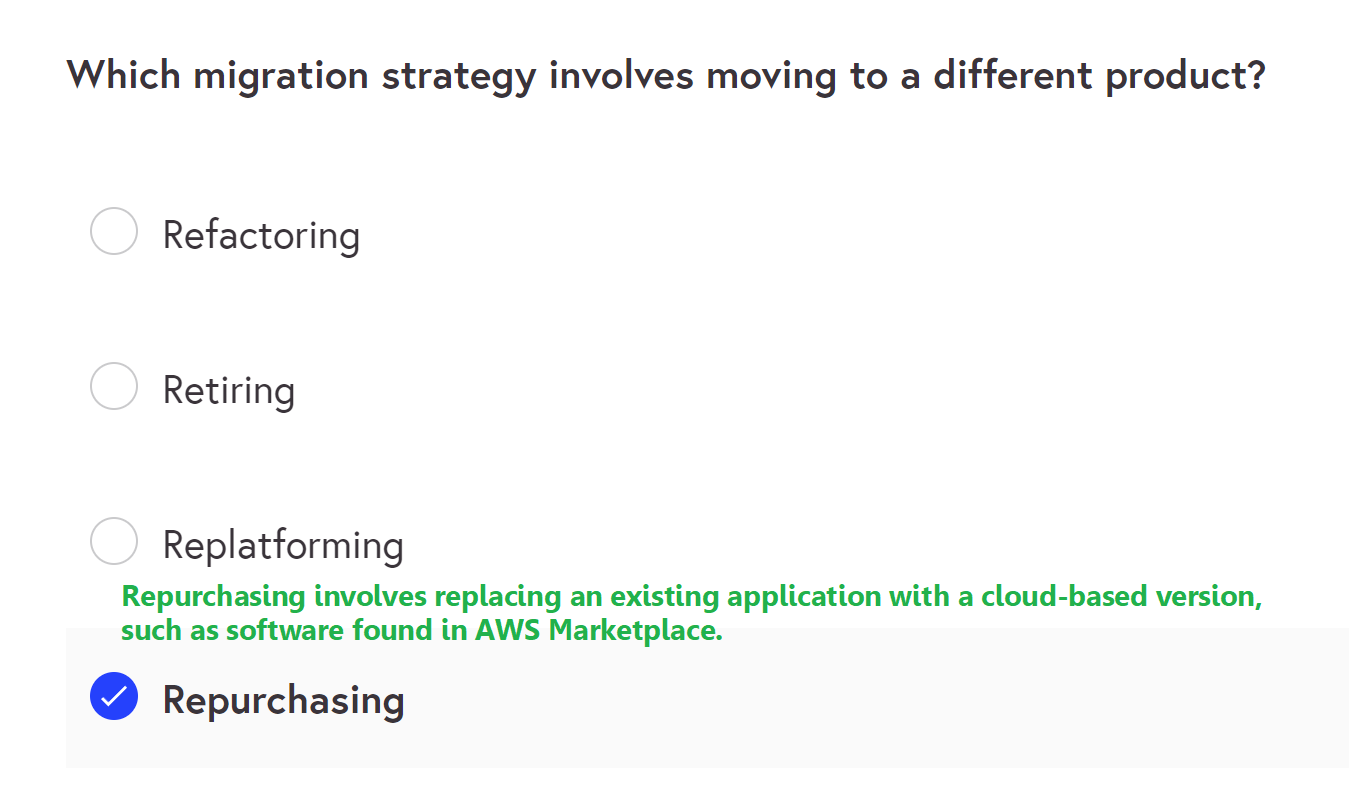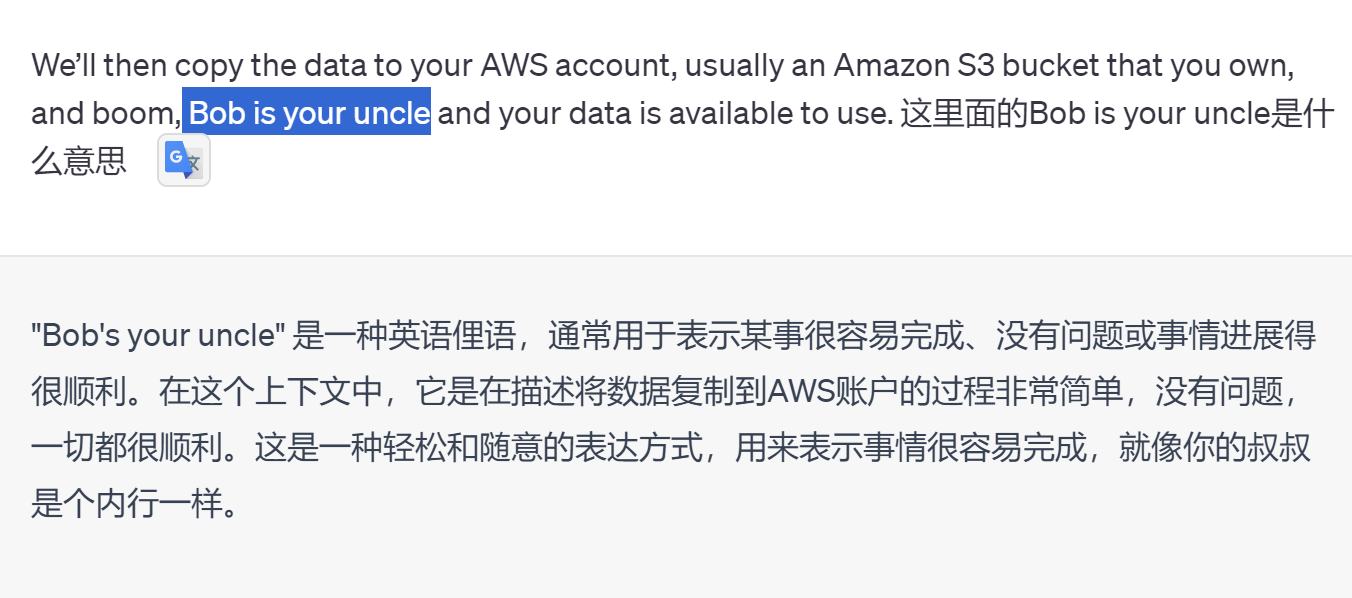Week 6: Migration and Innovation, The Cloud Journey
TODO:AWS Free Tier & 自建机场 by vultr ^^
AWS Cloud Adoption Framework (AWS CAF)
In general, the Business, People, and Governance Perspectives focus on business capabilities, whereas the Platform, Security, and Operations Perspectives focus on technical capabilities.
业务视角:
- 专注于将IT与业务需求对齐,将IT投资与关键业务结果相联系。
- 帮助创建云采用的业务案例并优先考虑云计算项目。
- 常见职位:业务经理、财务经理、预算所有者、战略干系人。
人员视角:
- 支持制定云采用的组织范围变更管理策略。
- 评估组织结构、角色、技能需求,并确定差距。
- 优先考虑培训、人员配备和组织变更。
- 常见职位:人力资源、人员配备、人员经理。
治理视角:
- 侧重于将IT战略与业务战略对齐,以最大程度地提高业务价值并降低风险。
- 解决有效业务治理在云中所需的技能和流程。
- 管理和度量云投资以评估业务成果。
- 常见职位:首席信息官(CIO)、项目经理、企业架构师、业务Business分析师、投资组合Portfolio经理。
平台视角:
- 提供在云上实施解决方案和迁移本地工作负载的原则和模式。
- 利用架构模型来理解和传达IT系统结构。
- 详细描述目标状态环境的架构。
- 常见职位:首席技术官(CTO)、IT经理、解决方案架构师。
安全视角:
- 确保组织实现安全目标,包括可见性、可审计性、控制和灵活性。
- 指导选择和实施满足组织需求的安全控制。
- 常见职位:首席信息安全官(CISO)、IT安全经理、IT安全分析师。
运营视角:
- 使IT工作负载能够按照与业务干系人的期望一致的方式启用、运行、使用、操作和恢复。
- 定义日常、季度和年度业务运营。
- 支持业务运营并确定实施成功的云采用所需的流程变更和培训。
- 常见职位:IT运营经理、IT支持经理。
每个视角在云采用过程中发挥关键作用,确保同时考虑业务和技术方面,并确保组织已准备好接受与采用云技术相关的变化。
Migration Strategies
The 6 Rs of migration options (rehost, replatform, repurchase, refactor or re-architect, retire, and retain).
Rehosting(重新托管):
- 也被称为“搬迁并升级”,涉及将应用程序无需进行更改地迁移到云上。
- 在大型遗留系统迁移的情况下,公司希望迅速实施迁移并扩展以满足业务需求时,大多数应用程序采用重新托管策略。
Replatforming(重新平台化):
- 也被称为“提升、优化和迁移”,涉及进行少量的云优化以实现明显的收益,而不改变应用程序的核心架构。
Refactoring/re-architecting(重构/重建架构):
- 重构(也称为重建架构)涉及通过使用云本机功能来重新构想应用程序的架构和开发方式。
- 重构受到了强烈的业务需求驱动,以添加功能、扩展或提高性能,这些在应用程序的现有环境中很难实现。
Repurchasing(重新采购):
- 重新采购涉及从传统许可证模式转向软件即服务(SaaS)模式。
- 例如,企业可能选择通过将客户关系管理(CRM)系统迁移到Salesforce.com来实施重新采购策略。
Retaining(保留):
- 保留包括保留对业务至关重要的应用程序在源环境中。这可能包括需要进行重大重构才能迁移的应用程序,或者可以推迟到以后的工作。
Retiring(退役):
- 退役是移除不再需要的应用程序的过程。

AWS Snow Family
The AWS Snow Family is a collection of physical devices that help to physically transport up to exabytes of data into and out of AWS.
AWS Snow Family is composed of AWS Snowcone, AWS Snowball, and AWS Snowmobile.
AWS Snowcone:小巧、坚固、安全的边缘计算和数据传输设备,具有2个CPU、4GB内存和8TB存储。
AWS Snowball:提供两种设备类型:
- Snowball Edge Storage Optimized:适用于大规模数据迁移和高容量本地计算,提供80TB HDD容量和1TB SATA SSD。
- Snowball Edge Compute Optimized:用于机器学习、视频分析等需求,提供强大的计算资源。
AWS Snowmobile:适用于百亿字节级数据传输,使用45英尺的坚固化集装箱,每个Snowmobile可传输高达100PB的数据。

Innovation with AWS
Serverless Applications
With AWS, serverless refers to applications that don’t require you to provision, maintain, or administer servers. You don’t need to worry about fault tolerance or availability.
Artificial Intelligence
AWS offers a variety of services powered by artificial intelligence (AI).
For example, you can perform the following tasks:
Convert speech to text with Amazon Transcribe.
Discover patterns in text with Amazon Comprehend.
Identify potentially fraudulent online activities with Amazon Fraud Detector.
Build voice and text chatbots with Amazon Lex.
Machine Learning
Resources
The AWS Well-Architected Framework
The AWS Well-Architected Framework is designed to help you create reliable, secure, efficient, and cost-effective systems in the AWS Cloud. It is organized into six pillars:
Operational Excellence: Continuously improve business value delivery and processes, including practices like operational automation, documentation annotation, and fault anticipation.
Security: Protect information and systems, emphasizing practices such as automating security, applying security at all layers, and safeguarding data in transit and at rest.
Reliability: Ensure system resilience through the ability to recover from failures, dynamically acquire computing resources, and mitigate disruptions. This pillar includes testing recovery procedures, scaling horizontally, and automatic failure recovery.
Performance Efficiency: Efficiently utilize computing resources to meet system requirements and maintain efficiency as demand changes. It involves experimenting, using serverless architectures, and designing for global scalability.
Cost Optimization: Run systems at the lowest cost while delivering business value. Practices include adopting consumption models, analyzing expenditure, and using managed services to reduce ownership costs.
Sustainability: Introduced as part of the AWS Well-Architected Framework, sustainability focuses on continually improving sustainability impacts by reducing energy consumption and increasing efficiency across all components of a workload. This involves understanding impact, setting sustainability goals, maximizing resource utilization, anticipating new efficient technologies, using managed services, and reducing the downstream impact of cloud workloads.
Benefits of the AWS Cloud
Six advantages of cloud computing
- Trade upfront expense for variable expense.
- Benefit from massive economies of scale.
- Stop guessing capacity.
- Increase speed and agility.
- Stop spending money running and maintaining data centers.
- Go global in minutes.
例子
- Receiving lower pay-as-you-go prices as the result of AWS customers’ aggregated usage of services: an example of benefiting from massive economies of scale.
- Deploying an application in multiple Regions around the world: This process is an example of Go global in minutes.
- Paying for compute time as you use it instead of investing upfront costs in data centers: This process is an example of Trade upfront expense for variable expense.
- Scaling your infrastructure capacity in and out to meet demand: This process is an example of Stop guessing capacity.
突然发现复制到剪贴板上的图片可以直接粘贴过来